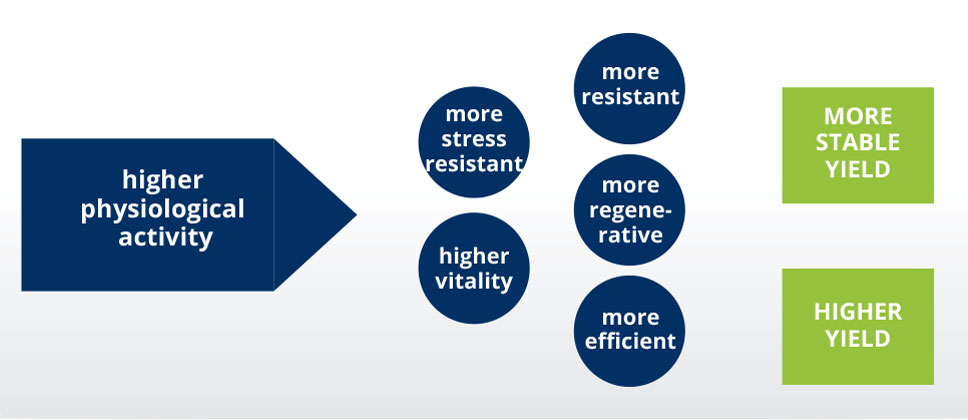SU Hybrid Wheat. Looking Towards the Future.
Wheat is grown on more land area than any other food crop. It is unrivalled in its range of cultivation, from 67° N in Scandinavia and Russia to 45° S in Argentina, including elevated regions in the tropics and subtropics. It ranks among the ‘big three’ cereal crops, with over 600 million tons being harvested annually. Therefore, wheat is the second most-produced cereal after maize worldwide. The many species of wheat together make up the genus Triticum. The most widely grown is common wheat (T.aestivum). The archaeological record suggests that wheat was first cultivated in the regions of the Fertile Crescent around 9600 BC.
Since 1985, breeders and researchers of SAATEN-UNION put a lot of effort into the development of high potential hybrid winter wheat varieties. This Intensive breeding and production expertise makes SAATEN-UNION the leading hybrid wheat supplier until now. Hybrid wheat is a key element for a highly competitive and sustainable crop production. Due to heterosis hybrids are more vigorous. It leads to enhanced tillering aboveground and to a better root development underground. Both together result in:
- Higher yield stability
- More vigorous & healthy plants
- Better nutrient as well as water efficiency
Heterosis - more Efficieny: Your Advantages

Hybrid wheat demands an adapted cultivation system in terms of sowing time, seed rate, fertilisation and crop protection. The more efficient plants can easily compensate the reduced sowing rate. Hybrid wheat achieves the necessary yield-forming parameters: ears per sq, grains per ears as well as thousand kernel weight resulting in higher yields compared to conventional varieties. Furthermore hybrid wheat is able to cope better with less favourable growing conditions. The resilient plants have a superior rate even under difficult growing conditions. Year by year farmers have to face several challenges: Environmental changes, restrictions in pesticide usage as well as nitrogen applications. Agriculture is continuously changing. Combining highly efficient hybrid plants with sophisticated crop production management is already a solution for many farmers.
By growing hybrid wheat, farmers are able to reduce costs and to ensure their income.